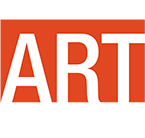A Modern Landscape: Takao Tanabe
About the Exhibition
This exhibition explores the career of Takao Tanabe (b. 1926) through work from the collection of the West Vancouver Art Museum and other North Shore public and private collections. A resident of West Vancouver from 1962 until 1967, Tanabe is among Canada’s most eminent painters, recognized for his landscape paintings that bridge the gap between abstraction and realism.
The works in this exhibition represent each of the three major stages in his career, including his early abstract paintings and prints from the 1950s and 1960s, his prairie landscapes from the 1970s to 1980, and his West Coast landscapes, which he has worked on for the last 40 years. While his subjects have shifted throughout these stages, his allegiance to form and a repudiation of visible brush strokes have not. Tanabe’s paintings have been described by artists and curators alike as “technically impeccable”, with many of the large-scale works taking months to paint.
A graduate from the Winnipeg School of Art, where he studied with Joseph Plaskett, Tanabe moved to New York City in the hope of becoming an abstract expressionist painter. While working in New York City and later, in Vancouver, he created abstract paintings. A move to Banff, Alberta, in 1973, where he was hired to lead the Painting Program at the Banff School of Fine Arts, precipitated a new phase in his work, focused on the prairie and foothill landscapes, building on his earlier work. His prairie landscapes were unlike anything seen in Canada before, picturing an alternative to the Group of Seven traditions and those of his contemporaries. Instead of featuring scenic pastorals of farms and livestock, these prairie landscapes were distilled down to two basic elements: the land and the sky. A move from Banff to Vancouver Island in 1980 led to his third major stage. The West Coast landscapes are fuelled by a compulsion to capture the surface and movement of the Pacific Ocean, set against the backdrop of atmospheric fog that hides and reveals distant mountain ranges and islands. Each of Tanabe’s artistic stages has been informed by his earlier work, resulting in poetic landscapes that he could process and refine endlessly.
The West Vancouver Art Museum is delighted to showcase 12 works in this exhibition, which were donated by the artist in 2011 and 2019. This is the first time the works given in 2019 are being exhibited.
About the Artist
Born in Prince Rupert in 1926, Tanabe was interned with his family during the Second World War in Lemon Creek, B.C. After the War, he joined some of his siblings in Winnipeg, attending the Winnipeg School of Art from 1946-9, continuing his studies at the Brooklyn Museum Art School. The Emily Carr Scholarship enabled him to travel to Europe in 1953 and a Canada Council grant supported him for a year studying in Japan in 1959. In 1962, he settled in West Vancouver, living in a modern house designed by Peter Baker. In 1973, Tanabe became the Head of the Painting Program at the Banff School of Fine Arts (now the Banff Centre for Arts and Creativity), living and working there until 1980, when he moved to Vancouver Island, where he lives now.
Tanabe’s work is held in important national and international public and private collections, including the Art Gallery of Greater Victoria; Art Gallery of Nova Scotia; Art Gallery of Ontario; Audain Art Museum; Canada Council Art Bank; Glenbow Museum; McMaster Museum of Art; National Gallery of Canada; Tate Museum; Vancouver Art Gallery; as well as the commercial collections of Jarislowsky Fraser Ltd.; Scotiabank; and UBS Canada Inc.
Tanabe is the recipient of several honorary degrees and awards including the Order of British Columbia (1993); Order of Canada (Member, 1999); the Governor General's Award in Visual and Media Arts (2003); and the Audain Prize for Lifetime Achievement in the Visual Arts (2013).
Events and guided tours
View the events page to attend a tour, view a virtual film screening, join a virtual artist talk, and more.
Explore the exhibition in this brief introductory video, produced by Gloria Wong.

